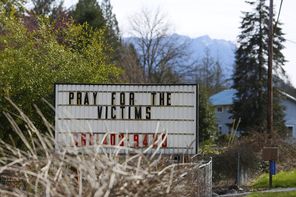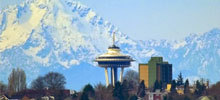Originally published March 28, 2014 at 5:13 PM | Page modified April 13, 2014 at 10:06 PM
Guest: Was the Oso mudslide simply an act of God?
As a historian who studies disasters, guest columnist Diana L. Di Stefano is struck by the similarities between what happened over the weekend in Snohomish County and earlier catastrophes.
Special to The Times
![]()
WHEN disasters like last week’s massive mudslide in Snohomish County strike, all attention must focus first on the response and rescue efforts. But once the rescue efforts are over, the questions eventually will turn to whom or what is to blame for this tragedy.
Is a mudslide of this nature simply an unpredictable act of God? Did the local and state governments know of the risk and should they have done more to protect the people in that place?
The evidence suggests that geologists and government agencies were indeed aware of the danger. The area had a history of slides, according to geologist Daniel J. Miller. In a news story, The Seattle Times reported that a slide in 2006 “disrupted risk-mitigation projects already in the works.”
Local place names such as Slide Hill, Slide Creek and Mud Flow Creek indicate that residents were aware of the danger, too, though they likely never fully understood the potential scale of such an event.
As a historian who studies disasters, I’m struck by the similarities between what happened in Snohomish County and earlier landslides, avalanches and other types of catastrophes.
Historians look for patterns, and it would be hard to miss one here. For instance, in 1910, a massive avalanche swept down on two stuck trains in the Cascades, just below present-day Stevens Pass on Highway 2, killing nearly 100 people.
While representatives of the Great Northern Railway blamed it on an act of God, employees and survivors painted a different picture.
Employees pointed out that the company had gone to the trouble and expense of building dozens of snow sheds to protect the train tracks from slides, so clearly it was aware of the potential danger. In fact, records show that slides plagued the railway line during its construction and contributed to the decision to build a very expensive tunnel.
A few longtime workers even said they were keenly aware of the conditions that caused slides. Surviving passengers further claimed they had heard employees discussing the danger of leaving the trains in that particular spot.
All of this evidence led to a civil suit filed in King County Superior Court that blamed the railway company for the death of one of the passengers — a test case for other disaster-related lawsuits. The lower court found for the plaintiff, but in the appeal Washington state’s Supreme Court ruled in favor of the defendant, agreeing that the avalanche was an act of God.
Subsequent lawsuits invariably determined the same, leaving victims without emotional or financial compensation. Nature was to blame. Humans were absolved of any responsibility.
Although this happened more than a century ago, it seems to me not much has changed. Continuing to blame God, nature or unforeseen forces beyond our control denies the human contribution to these disasters — a habit that means we stay vulnerable despite the knowledge we possess.
As a result, risk is assessed through a faulty lens, made blurrier by our short memories. We’ve all been told that we study history so we won’t repeat the mistakes of the past, but are we truly paying attention to those lessons?
Diana L. Di Stefano is assistant professor of history at the University of Alaska Fairbanks. She is the author of “Encounters in Avalanche Country: A History of Survival in the Mountain West, 1820-1920.”
 Four weeks for 99 cents of unlimited digital access to The Seattle Times. Try it now!
Four weeks for 99 cents of unlimited digital access to The Seattle Times. Try it now!













